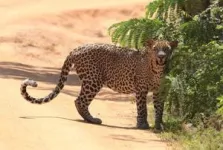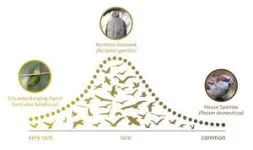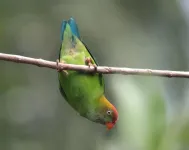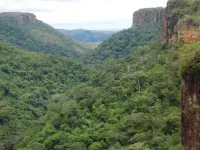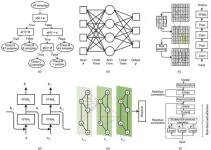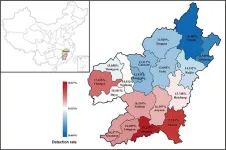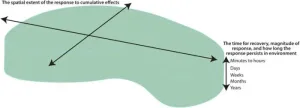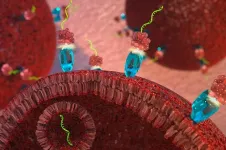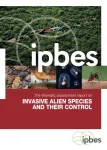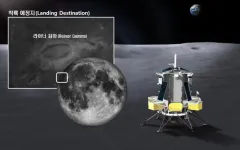The art of wandering in vertebrates: new mapping of neurons involved in locomotion
2023-09-04
(Press-News.org)
For those fortunate enough to walk normally, wandering is such an expected behavior that we hardly consider that it involves complex, partly involuntary processes. “Animals move to explore their environment in search of food, interaction with others, or simply out of curiosity. But the perception of danger or a painful stimulus can also activate an automatic flight reflex”, Martin Carbo-Tano, a post-doctoral fellow at Paris Brain Institute, explains. In both cases, movement initiation relies on the activation of so-called reticulospinal control neurons, which form an intertwined network in the most posterior part of the brain—the brainstem. These neurons relay nerve signals between the brain and the spinal cord and are essential for motor control of the limbs and trunk and movement coordination.
Upstream of the reticulospinal neurons is the mesencephalic locomotor region (MLR), which is also essential for locomotion since, in animals, its stimulation triggers forward propulsion. It is found in many vertebrates, including monkeys, guinea pigs, cats, salamanders, and even lampreys. “Because the role of the MLR is conserved in many vertebrate species, we assume that it is an ancient region in their evolution—essential for initiating walking, running, flying, or swimming,” he adds. “But until now, we didn't know how this region transmits information to the reticulospinal neurons. This prevented us from gaining a global view of the mechanisms that enable the vertebrae to set themselves in motion and, therefore, from pointing out possible anomalies in this fascinating machinery”.
The pilot station opens its doors
Studying movement initiation is a little tricky: neurons located in the brain stem are not easily accessible and observing their activity in vivo in a moving animal proved difficult. To solve this problem, Martin Carbo-Tano has developed a new approach to stimulate tiny areas in the brain. Together with Mathilde Lapoix, a Ph.D. student in Claire Wyart's team at Paris Brain Institute, the researchers took advantage of the transparency of the zebrafish larvae brain to localize the structures involved in locomotion downstream of the MLR and follow the propagation of nerve impulses. This method, inspired by the work of their collaborator Réjean Dubuc at Montréal University, allowed them to make several remarkable discoveries.
“We observed that neurons in the mesencephalic locomotor region are stimulated when the animal moves spontaneously, but also in response to a visual stimulus. They project through the pons—the central part of the brain stem—and the medulla to activate a subpopulation of reticulospinal neurons called 'V2a'. These neurons control the finer details of movement, such as starting, stopping, and changing direction. In a way, they give steering instructions! Previous work on mice had revealed that reticulospinal neurons control turning; Martin and Mathilde have discovered the control circuit that triggers forward locomotion”, Claire Wyart says.
The midbrain, a concentration of intensity
To better understand the effects of this mechanism on the movements of larval zebrafish, the researchers triggered it experimentally by stimulating the mesencephalic locomotor region. They observed that the duration and vigor of forward movement correlated with the intensity of the stimulation. “Quadrupeds can adopt different gaits, such as walking, trotting, or galloping. But aquatic animals also mark gait transitions”, Martin Carbo-Tano adds. “We think that MLR has a role to play in this intensification of movement, which we have observed in zebrafish.”
For the first time, this work made it possible to map the neuronal circuits involved in initiating forward movement—a deficient function in patients with Parkinson's disease. This is an essential step in shedding light on the motor control mechanisms upstream of the spinal cord. One day, it may be possible to identify and control all the reticulospinal neurons one by one to model in detail the workings of locomotion and repair those that do not function correctly.
END
ELSE PRESS RELEASES FROM THIS DATE:
2023-09-04
Halle/Saale, Fort Lauderdale. More than 100 years of observations in nature have revealed a universal pattern of species abundances: Most species are rare but not very rare, and only a few species are very common. These so-called global species abundance distributions have become fully unveiled for some well-monitored species groups, such as birds. For other species groups, such as insects, however, the veil remains partially unlifted. These are the findings of an international team of researchers led by the German Centre for Integrative Biodiversity Research (iDiv), the Martin Luther University Halle-Wittenberg ...
2023-09-04
Extreme El Niño weather saw South America’s forest carbon sink switch off
Hot and dry conditions resulted in increased tree death
Evidence that most forest areas withstand periods of severe drought
Greatest impact in forests with drier climates
Tropical forests in South America lose their ability to absorb carbon from the atmosphere when conditions become exceptionally hot and dry, according to new research.
For a long time, tropical forests have acted as a carbon sink, taking more ...
2023-09-04
When it comes to global warming trends, the Arctic is a troubling outlier. The Arctic warms nearly four times faster than the global average, and aerosols play an important role in that warming. Scientists have long known that pollutants from other regions can accumulate in the Arctic atmosphere where they alter atmospheric chemistry, absorb sunlight, and affect local weather patterns, leading to localized warming that melts ice and snow. Sea salt particles dominate aerosol mass concentration, but their production mechanisms and impact on Arctic climate have remained unclear.
Atmospheric scientists led by Jian Wang, director of the Center for Aerosol ...
2023-09-04
In a review published in Engineering, scientists explore the burgeoning field of machine learning (ML) and its applications in chemistry. Titled “Machine Learning for Chemistry: Basics and Applications,” this comprehensive review aims to bridge the gap between chemists and modern ML algorithms, providing insights into the potential of ML in revolutionizing chemical research.
Over the past decade, ML and artificial intelligence (AI) have made remarkable strides, bringing us closer to the realization of intelligent machines. The advent of deep learning methods and enhanced data storage capabilities has played a pivotal role in this progress. ML has already demonstrated success ...
2023-09-04
Around 5.2% of the global population carries abnormal hemoglobin genes [1]. Each year, 300,000 to 500,000 children are born with severe hemoglobinopathies worldwide, with approximately 80% of these cases occurring in developing countries [2]. Thalassemia is the most common hereditary hemoglobinopathy and occurs in 4.4 out of every 10,000 live births [3]. It is prevalent in Mediterranean coastal areas, Africa, the Middle East, Southeast Asia, and southern China.
A previous study indicated that Ganzhou, the southernmost city in Jiangxi province, had a thalassemia prevalence ...
2023-09-04
Abu Dhabi, UAE (September 4, 2023) – In a breakthrough in cancer therapeutics, a team of researchers at the Magzoub Biophysics Lab at NYU Abu Dhabi (NYUAD) has made a significant advance in light-based therapies – biocompatible and biodegradable tumor-targeting nanospheres that combine tumor detection and monitoring with potent, light-triggered cancer therapy to dramatically increase the efficacy of existing light-based approaches.
Non-invasive, light-based therapies, photodynamic therapy (PDT) and photothermal therapy (PTT) have the potential to be safe and effective alternatives to conventional cancer treatments, which are beset by a ...
2023-09-04
Traditionally, the impact of human activity on an ecosystem has lacked context when planning restorative ecosystem mitigation and management strategies. Multiple human activities over time and space, the resilience of a particular ecosystem, and the stress caused by many individual or related, overlapping activities that generate cumulative effects may affect the overall "ecosystem response footprint," or ability of an ecosystem to adapt and change to human activity.
A team of marine scientists reviewed the most recent perspectives on ecological footprints to rigorously define the term "ecosystem response footprint" as the ...
2023-09-04
WEST LAFAYETTE, Ind. – A new cancer therapy developed by Purdue University researchers attacks tumors by tricking cancer cells into absorbing a snippet of RNA that naturally blocks cell division. As reported today in Oncogene, tumors treated with the new therapy did not increase in size over the course of a 21-day study, while untreated tumors tripled in size over the same time period.
Cancer can begin almost anywhere in the human body. It is characterized by cells that divide uncontrollably and that may be able to ignore signals to ...
2023-09-04
The severe global threat posed by invasive alien species is underappreciated, underestimated, and often unacknowledged. According to a major new report by the Intergovernmental Platform on Biodiversity and Ecosystem Services (IPBES), more than 37,000 alien species have been introduced by many human activities to regions and biomes around the world. This conservative estimate is now rising at unprecedented rates. More than 3,500 of these are harmful invasive alien species – seriously threatening nature, nature’s contributions to people and good quality of life. Too often ignored until it is too late, invasive alien species are a ...
2023-09-04
The Ministry of Science and ICT (Minister Jong-Ho Lee, hereinafter referred to as 'MSIT') and the Korea Astronomy and Space Science Institute (Director Young-Deuk Park, hereinafter referred to as 'KASI') announced the beginning of the transfer of the lunar space environment monitor, 'LUSEM'(Lunar Space Environment Monitor) that will be aboard United States’ unmanned lunar lander in 2024, has began on September 4th.
LUSEM is a payload developed by the Korea Astronomy and Space Science Institute (KASI) in participation with the U.S. NASA's CLPS(Commercial Lunar Payload Services) initiative ...
LAST 30 PRESS RELEASES:
[Press-News.org] The art of wandering in vertebrates: new mapping of neurons involved in locomotion

